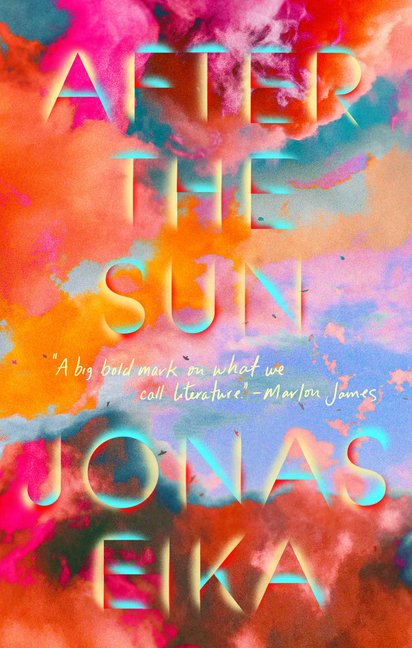[ad_1]
Jonas Eika—author of After the Sun, translated into English by Sherilyn Nicolette Helberg—has managed to do the impossible; or, at least, the very difficult. He’s written a book that both feels bleeding-edge now, and seems like it will still feel bleeding-edge in a decade. Certainly, the complexities of our modern world are no stranger to contemporary fiction, but often these attempts to capture the moment we find ourselves in feel clumsy, too bogged down in attempts to note the specificities of smartphone use, or the names of every startup in Silicon Valley. Instead, across After the Sun’s four stories, Eika deftly balances both the systems that weigh on our thoughts and emotions, and the characters experiencing them. There’s a rare nuance on display here, a precision in knowing what to leave off-page, while managing to be unflinching in the face of the grotesque. After the Sun is at times searingly beautiful, at times so severe you want to look away, but can’t—breathtaking in the truest sense.
After the Sun consists of four stories, one of which is split into two parts. Aside from the two halves, each is unique, though they all share a sense of longing and loneliness that pervades the characters as much as it draws an echo from our own lives. In “Alvin,” an emigrant Dane now living in Málaga (despite featuring stories set across the globe, more than a few characters are Danish, one of the only tells towards the author’s own background) returns home to Copenhagen for work, his job being to install operating systems for banks. When he arrives, he finds the bank inexplicably destroyed, as if it had exploded. He wanders hazily into a café, and falls in quickly with the eponymous Alvin, a disaffected sort of character who trades derivatives for a living. It’s a pseudo-romantic connection between the two, and the contours and boundaries between their relationship are what keep the story compelling.
Soon thereafter the man finds his life deeply intertwined with Alvin’s. The two keep odd hours in Alvin’s apartment, manipulating the markets from a laptop, before they decide to travel to Bucharest on a whim. “Alvin” serves as a sort of perfect microcosm for what makes these stories so great. Eika expertly molds the space between the two men, building their relationship on several levels, while also knowing how to preserve the ambiguity that lets it breathe. Underneath it all are the systems that in many cases govern our lives. The bank lies destroyed, and yet the markets tick on. The two make money trading contracts for sheep and silver—of course, real goods, existing in the world—without ever intending to exercise those contracts. The two men are isolated in a sense, one step removed from the actual. Upon returning to Copenhagen to finally complete his job, he finds the bank still destroyed and yet functional in the rubble. Even his absence is brushed aside in a Fight Club-esque manner.
“Bad Mexican Dog” is the story split into two parts, more or less a novella. It follows a group of “beach boys,” a number of underage boys who work on a beach resort in Cancun, getting drinks and snacks, fanning and applying lotion to guests, and all vying to be hired as someone’s “personal boy.” There’s a sort of dark undercurrent in many of the stories here, but “Bad Mexican Dog” is the most sinister of the bunch. The boys work the beach, their bond growing tighter all the time. They pool wages for shared meals, commiserate about work, and become intimate with one another. The narrator boy longs for another of the group, Immanuel (which becomes Manuel, then Manu) but they grow distant once Immanuel begins to spend all of his time as the personal boy for an older French lady.
At one point, one of the boys, Ginger, is struck in the head with a rock after tripping into a tourist. The boys move his body, and resurrect him with a sexual ritual they perform on the beach, through the guidance of Immanuel, a sort of manifestation of their bonds. But separation is inevitable. The narrator becomes more isolated too, as he starts to participate in an extortion scheme, duping a tourist couple (also Danes) to take part in an embarrassing and distressing video shoot which is used for blackmail. In describing the contents of the video and the process of its filming, Eika turns to a sort of journal entry or letter from one of the tourists in question, one of a couple of near-epistolary moments in the book. These segments certainly help fill in the gaps, but border on explanatory, sapping some of the power from the rest of the collection.
“Me, Rory and Aurora” tells of the complicated relationship between married couple Rory and Aurora; the “me” being a homeless girl picked up on the street in London, who quickly slots herself into their lives. The couple seems to be barely avoiding homelessness themselves, living in a small apartment and supporting themselves through money Aurora makes selling drugs, despite being pregnant. Rory plays househusband, puttering around their apartment, stealing the ingredients for dinner. Aurora is selling drugs to members of a rehabilitation program, which consists of factory laborers and church goers. The group takes the drugs habitually in time with the service. The girl is in love with Aurora, and follows her around, trying to understand the behavior of the churchgoers and the rhythm that she and Aurora find themselves drawn into. Meanwhile, Rory creates a conflict at home, bringing in more and more unhoused people to spend the night as a sort of punishment for Aurora’s long days away.
My favorite story from the book is perhaps the most surreal, called “Rachel, Nevada”. The prose here is gorgeous, a standout even amongst the rest of the book. After seeing his wife off on the train to a concert, Antonio heads into the desert between his home in Rachel and Area 51, where he’s been hiding a sort of artifact of unknown origin he calls “The Sender”. While Antonio is unclear whether the Sender is lost Air Force tech or something else, its power is obvious: desert wildlife of all kinds seems drawn to the object, silently nuzzling against its metal exterior, as if trying to become a single entity. Antonio too is drawn to the Sender, as it seems to voice a pent-up loneliness he’s felt in the wake of his daughters’ deaths, detached from his wife as she remains social with the UFO club and other pursuits. With her gone for the night, Antonio makes his way to the Sender, resolved to perform his own violent ritual, flaying himself in an attempt to merge with the Sender.
Despite the body horror and sci-fi themes of “Rachel, Nevada,” there’s a distinct tenderness here. Eika’s delicate prose lays bare the depth of Antonio’s melancholic longing, a feat that feels all the more laudable given the decidedly dreamlike plot. Eika throws everything into question in the ending, before closing with another epistolary segment describing the singer Antonio’s wife Fay went to see, a story almost as compelling as the rest of the book in spite of its protracted nature.
In After the Sun, Eika captures our modern moment perhaps better than any writer I’ve seen attempt to. His understanding of the alienation felt deep at the heart of so many, and the abstracted and byzantine nature of the systems undergirding our detached lives is unparalleled. But most of all, in these stories he’s able to realize the joy to be found, however fleetingly, in our shattered world.


FICTION
After the Sun
By Jonas Eika translated by Sherilyn Nicolette Helberg
Riverhead Books
Published August 24, 2021
[ad_2]
Source link
